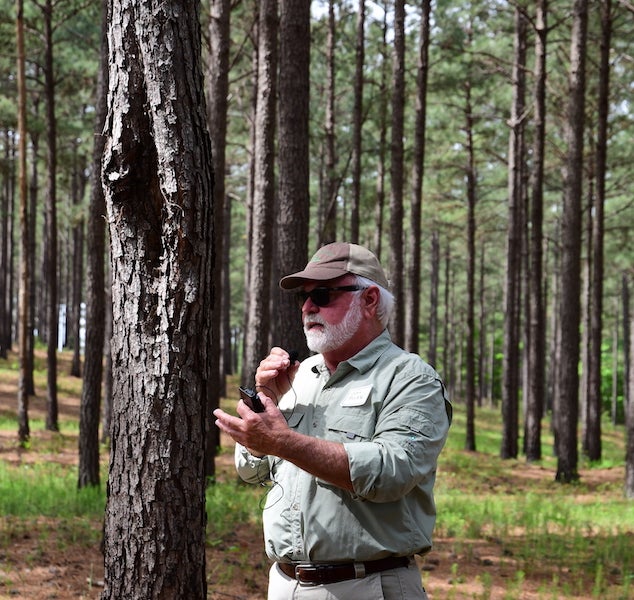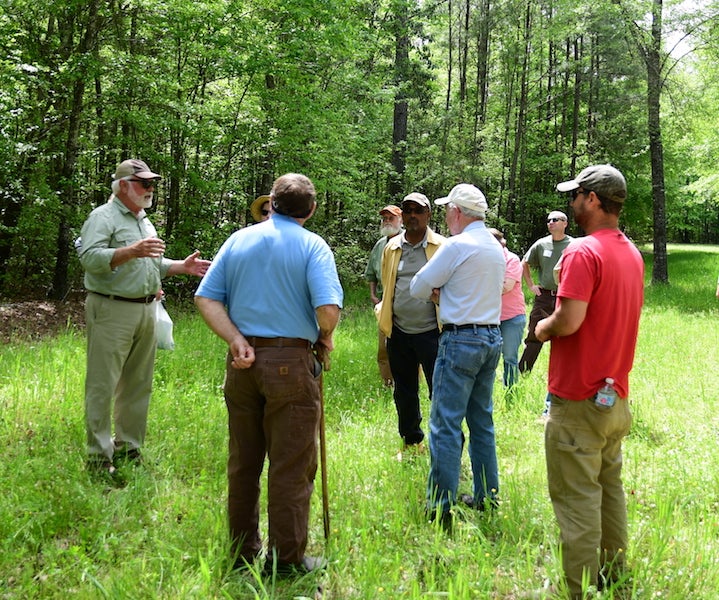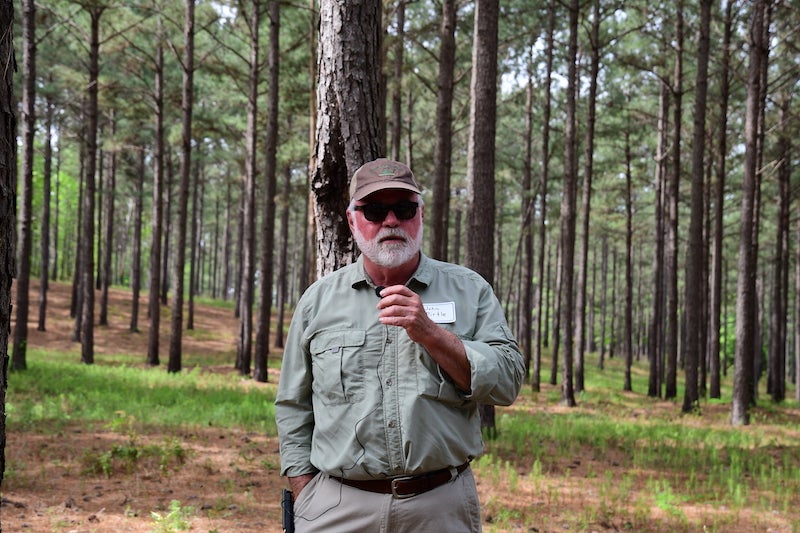Forestry best practices focus of tour
Published 3:11 pm Thursday, April 18, 2019
By JOYANNA LOVE/ Senior Staff Writer
A privately-owned forest in Stanton served as the visual aid for a lesson in forestry best practices by John Pirtle, a consulting forester, on April 17.
The Alabama Forest Owners’ Association hosted the event, which was sponsored by the Bradley/Murphy Forestry and Natural Resources Extension Trust.
The land being toured has been in the same family for 200 years. When Pirtle was first hired to consult for forest management on the property, there had not been any previous forest management measures taken. The forest was overgrown with a lot of underbrush.
Pirtle focused on best practices for a healthy and profitable forest during his talk.
His first suggestion for profitability was putting the land in an LLC (limited liability company).
“There is all kind of tax implications and things for you to help manage your property better, regardless of your income,” Pirtle said. “If you apply for cost share (programs through the government) your property is considered under the LLC, so the LLC is what the government looks at , not your personal income.”
He said because the LLC was established, the work that has been done to the property paid for the work to be done.
When timber was cut, money from the sale was put into the LLC account to be used for management practices.
Burning underbrush is done on a rotating schedule to keep it at bay. This can also be done in a hardwood tree forest under the right conditions. However, Pirtle said it is important to leave some areas with bushes and undergrowth for wildlife.
“You need to have a vision,” Pirtle said.
He said property owners need to know what they want to use the property for. The owner of the property being toured enjoys hunting turkeys, so this is a consideration in the management.
“What do you want out of this property?” Pirtle said. “How can we help you reach your goals?”
The next step is to identify the types of trees that are growing on the property.
“You cannot manage a piece of property if you do not know what you have,” Pirtle said.
Pirtle said his company has a wide variety of clients, some being more hands-on then others. He said he enjoys being able to show a property owner what to do to best manage their forest.
Hunter Brown, Pirtle’s partner, said the property owner wanted pine trees and pine straw to be the visual elements at the entrance to the property.
Brown said thinning is needed when the pine needles on the top branches start to touch.
Thinning and prescribed burning helps the trees grow by getting rid of competition for nutrients.
Trees that grow at a slower rate have stronger fibers and make better lumber.
Having the right tree in the right soil is a key to success, Pirtle said.
He also commented that there is a surplus of pine trees in central Alabama right now. Five new mills are opening, but it will create a surplus of chips to send to the paper mills so they will not be cutting as many trees. Pirtle said a mill that creates pellets from woodchips for burning in pellet stoves would be helpful.
Part of the forest management on the tour property is gradually replacing the loblolly pine trees with longleaf pine that grow better in the sandy soil. Pirtle said loblolly pine do not grow as well in central Alabama and are not native to it. The trees had been planted in this area for the paper mills, but Pirtle said the trees do not usually last longer than 30 years in central Alabama soil.
He said much of the soil in this area “was farmed to death.” However, longleaf pine grow well in poor soil.
“Longleaf is much more wildlife friendly and, to me, is a lot more esthetically pleasing,” Pirtle said.
When planting longleaf pine trees, it is crucial to have a crew that knows how to plant this specific tree, Pirtle said.
“You can’t machine plant longleaf pine,” Pirtle said.
Pirtle talked about a pine tree with a disease canker of Southern fusarium rust on it. A cure for this disease is unknown.
“it is a seven-stage disease,” Pirtle said. “There has to be oak trees nearby for this disease to continue to thrive.”
Pirtle said cutting lumber to sell had been a way his family made some extra money when needed.
“I was fascinated,” Pirtle said.
After working for the FBI and serving in the Army, Pirtle attended Auburn University and studied forestry.
He got a part-time job at the school in forest genetics research while completing his degree. After graduation, he worked for Union Camp Corporation paper company. From there, he went to work for the state in forestry. He later formed his own business providing consultation to forest owners on best practices.









